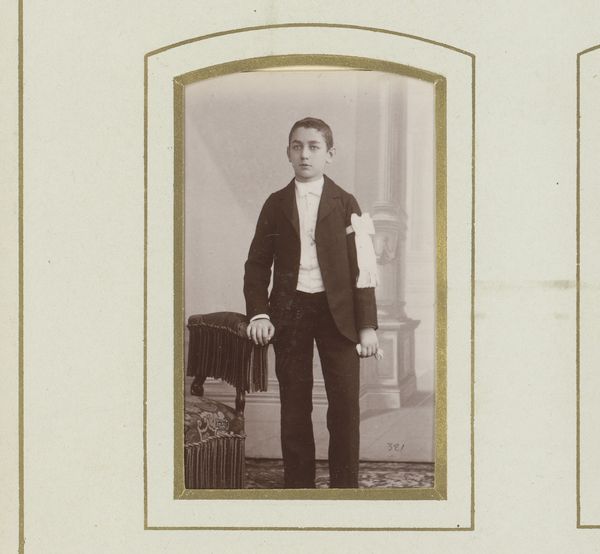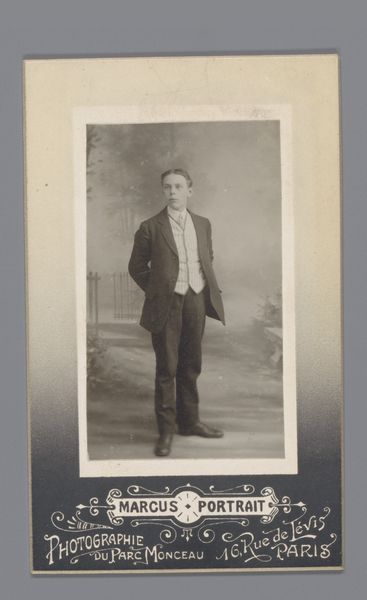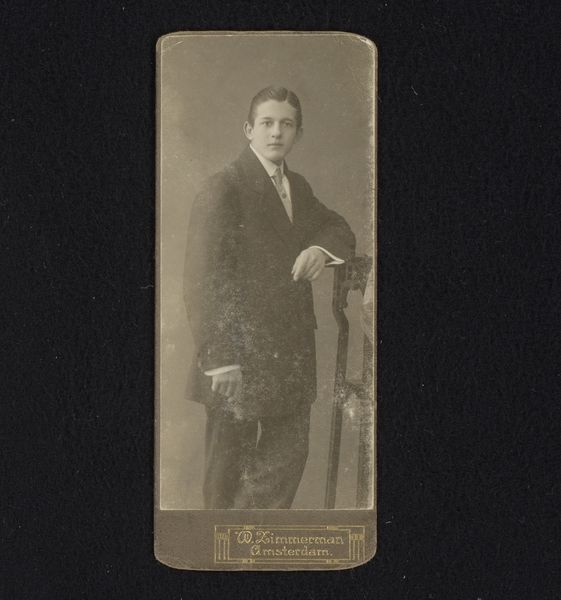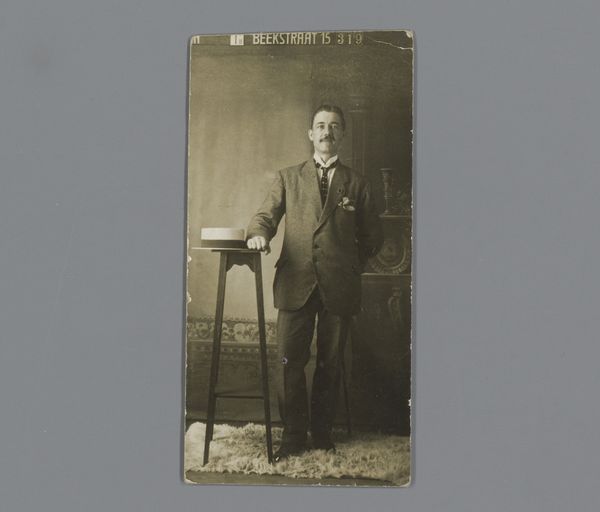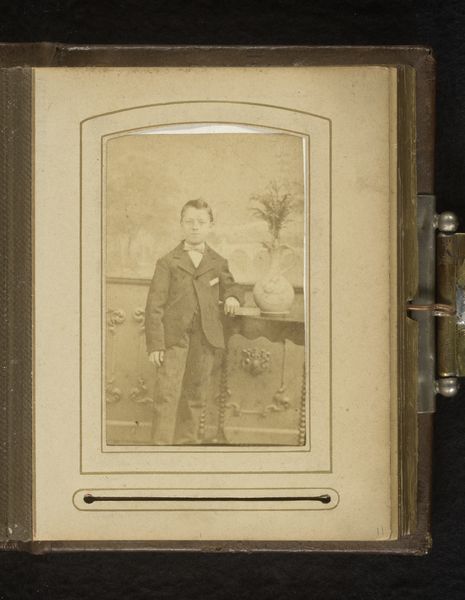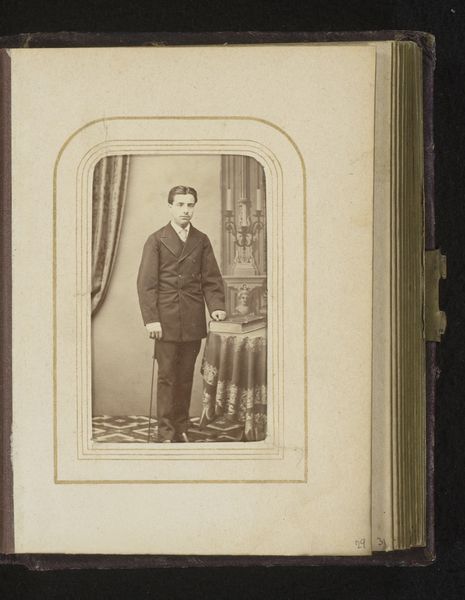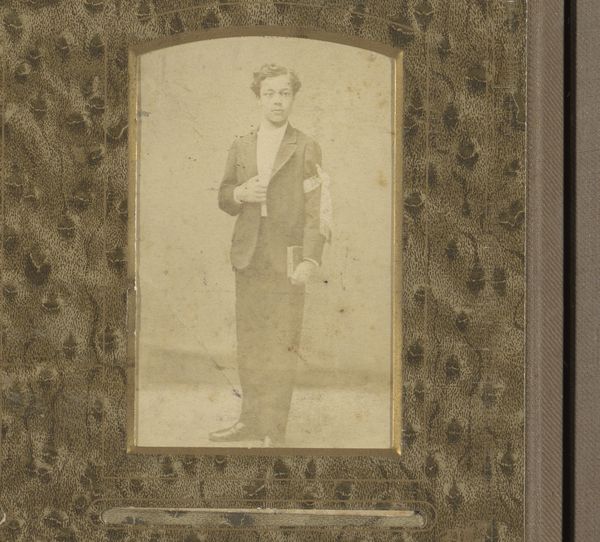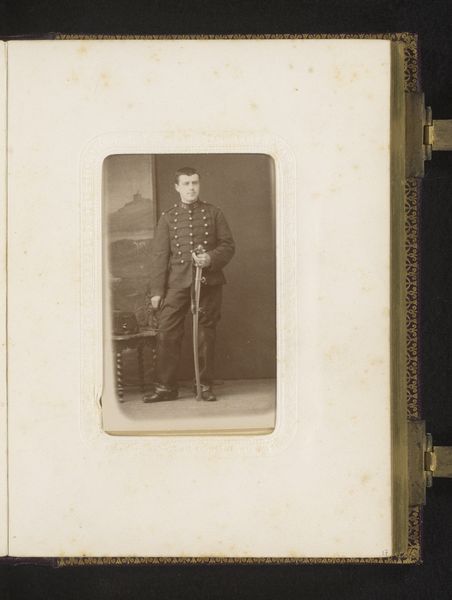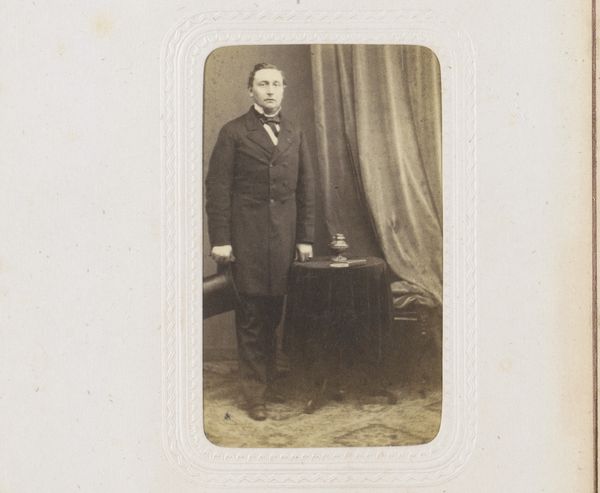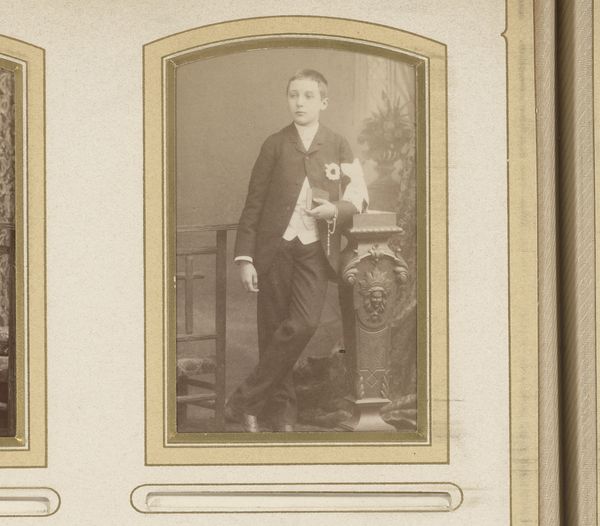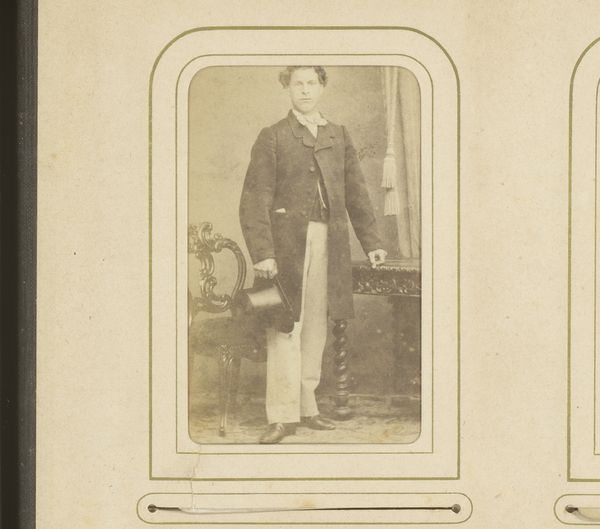
photography
#
portrait
#
photography
#
academic-art
#
realism
Dimensions: height 119 mm, width 49 mm
Copyright: Rijks Museum: Open Domain
Curator: Looking at this work, the overwhelming impression is one of gentility. There is such stillness and subtle composure. Editor: Indeed. This is "Portret van een jongen," or "Portrait of a Boy" in English, attributed to Guillame Maximilien Zimmermann. We believe it was made sometime before 1930. What’s most striking, though, is how time has impacted the photograph itself, the wearing of the edges and some cracks that are evidence of its material journey. Curator: Absolutely. I’m drawn to those very imperfections. You can almost feel the photographic process—the way the emulsion sits on the paper, the development techniques of the era. The photograph itself has become an artifact of its own time. Did the photographic studio that took the photo use particularly novel technologies to create this image? Editor: Well, Zimmermann, while somewhat obscure today, operated within established photographic conventions. It's more useful to think of studios then as playing a crucial social role, particularly for the middle class. Having your portrait taken, especially as a young man ready to embark on adulthood, was a significant social ritual. It speaks to social status and aspirations, not just of the sitter but also of his family. Consider how photographs functioned within social and family albums. What did the materiality say about the role of photography in society? Curator: That really reframes my view of it. It’s no longer just about the individual boy but about the rise of photographic studios catering to bourgeois desires for representation. One aspect I think interesting in that respect is also how his expression resists overt displays of emotion; his eyes almost seem to want to betray his inner vulnerability while his attire fights for rigid upper-class demeanor. Editor: Exactly. The lack of ostentation speaks volumes. So, Zimmermann’s "Portret van een jongen" provides a fascinating entry point into understanding the dynamics of identity, material culture, and social representation in the early 20th century. Curator: So, in a way, the marks of time, those material degradations we see on the print, further underscore this photograph as a document deeply embedded within its specific historical moment. Editor: Precisely. That damage tells as much about its life and role as the picture.
Comments
No comments
Be the first to comment and join the conversation on the ultimate creative platform.
